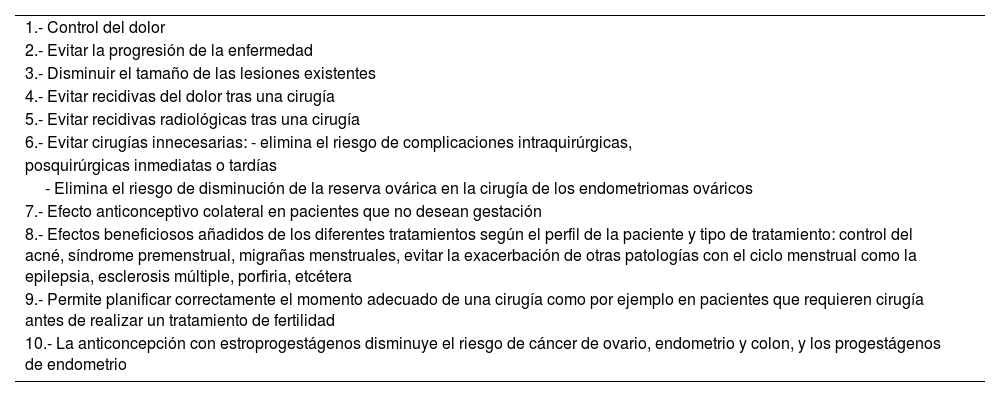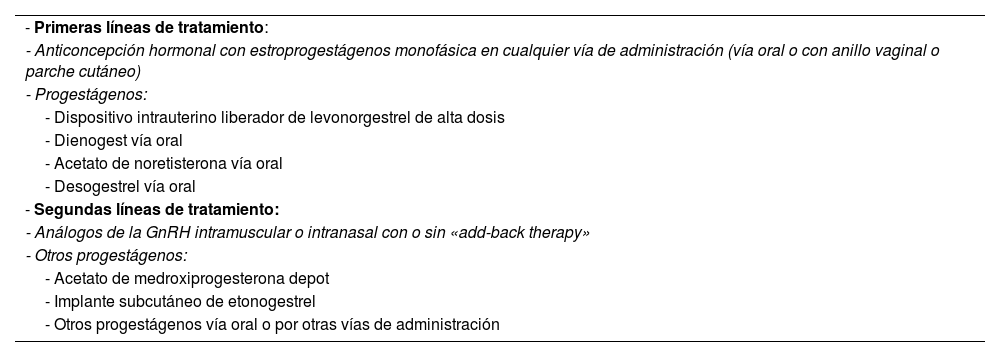
Edited by: Dr. Francisco Carmona y Dra. MªÁngeles Martínez Zamora
More infoLa endometriosis se considera una enfermedad inflamatoria crónica sistémica benigna y hormonodependiente que afecta aproximadamente a un 10% de las mujeres en edad fértil. Parece que cambios innatos o adquiridos de la capacidad del endometrio para implantar, invadir y crecer en un ambiente inflamatorio con dependencia estrogénica, así como la resistencia a la progesterona son características fundamentales para la aparición y desarrollo de la endometriosis. No existe, por el momento, ningún tratamiento óptimo que consiga alcanzar los cuatro objetivos básicos del tratamiento de la endometriosis: suprimir los síntomas, restaurar la fertilidad, eliminar la endometriosis visible, y evitar la progresión de la enfermedad. Puesto que la enfermedad se considera crónica, el tratamiento médico administrado, hasta la llegada de la menopausia o de una gestación, debe ser de larga duración, efectivo y seguro. Así pues, sus objetivos reales serán la reducción o eliminación de los síntomas y/o mejoría de la fertilidad. Dadas las limitaciones y riesgos de las cirugías, el tratamiento de primera elección en la actualidad es el hormonal. Este debe individualizarse en función de la edad, paridad, deseo genésico, síntomas asociados, antecedentes patológicos y preferencias de la paciente. De forma global, existen dos tipos de tratamientos de primera elección: los estroprogestágenos en regímenes extendidos o continuos y algunos progestágenos en diferentes vías de administración (dienogest, acetato de noretisterona o desogestrel por vía oral, así como el dispositivo intrauterino de levonorgestrel de alta dosis). Los diferentes tratamientos y sus pros y contras se exponen en el artículo.
Endometriosis is nowadays considered an inflammatory chronic benign disease that responds to hormone manipulation and affects up to 10% of women in fertile age. It seems that innate or acquired changes in the endometrium ability to implant, invade and grow in an inflammatory milieu with estrogenic dependence and progesterone resistance are the responsible for new endometriosis implants and contribute to perpetuate the illness. There is, at the moment, no optimal known treatment that achieves the four basic objectives for the treatment of endometriosis: treat the symptoms, improve fertility, eliminate endometrial implants, and avoid illness progression. As is now considered a chronic condition, the prescribed medical treatment, until the patient arrives to the physiological menopause status or gets pregnant, must be considered in the long term, and must be effective and safe. Therefore, the realistic objectives of the treatment are the reduction or abolishment of symptoms and/or improve fertility. As a consequence of the limitations and risks of endometriosis surgeries, the first-line treatment is hormonal. This must be individualized according to age, parity, pregnancy desire, associated symptoms, other illnesses and patients preferences. Globally, there are two main types of first-line hormonal treatments: estroprogestins in extended or continuous regimens and some progestins in different routes of administration (dienogest, norethisterone acetate or desogestrel orally, and levonorgestrel high-dose intrauterine device). The different hormonal treatments and their pros and cons are explained in the manuscript.








